Our cardiac physiotherapists have seen their role expand exponentially over the last decade. From what was primarily a patient rehabilitative role, our physiotherapists have become multi-faceted healthcare team players today.
Our cardiac physiotherapists have seen their role expand exponentially over the last decade. From what was primarily a patient rehabilitative role, our physiotherapists have taken great strides to become multi-faceted healthcare team players today, delivering exercise rehabilitation in-person and remotely, actively educating patients online and even on-air, as well as engaging in the training and education of healthcare professionals and students.
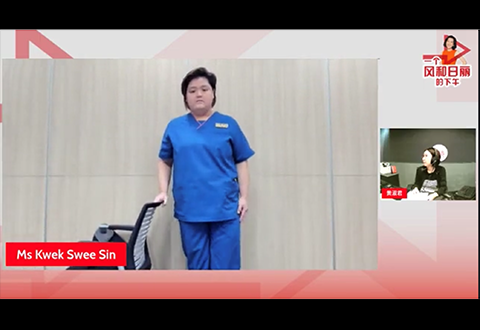
Kwek Swee Sin, Senior Physiotherapist, was on Capital 95.8FM’s Facebook LIVE recently to demonstrate suitable exercises that patients can do after a heart attack. Missed it? Click here to view.
“In addition to our day-to-day patient care duties, we are constantly challenging the status quo through rethinking care processes to improve treatment effectiveness and patient experience,” shared Sng E-lynn, Manager, Cardiac Physiotherapy Services.
Helping post-surgical patients get on their feet earlier
The team’s inventive attitude has culminated in several patient improvement initiatives. In 2018, the team first developed Enhanced Recovery After Surgery (ERAS), a programme that improves patient recovery through an evidence-based multidisciplinary team approach involving medical, nursing and physiotherapists. The team set up protocols and guidelines to standardise care provision to facilitate patient’s early mobility and recovery post-operation, improving outcomes and patient experience.
“One of the key contributing factors to ERAS is Prehabilitation (Prehab) where patients are recruited early into an exercise programme even before their surgery, as opposed to the conventional way where rehabilitation begins only after operation. With our ageing population, care of patients after surgery has become more complex due to co-morbidities, frailty and psychosocial factors. Hence, this is where Prehab comes in to benefit suitable patients,” shared E-lynn.
The team started tracking how fast patients were able to start mobilising after surgery and how soon they achieved functional independence - the ability to sit out, transfer or ambulate with supervision or independently - and factors such as the patient’s quality of recovery after surgery and prior to discharge, forming an objective assessment of post-operative recovery in the domains of physiologic, nociceptive, functional, cognitive and emotional recovery.
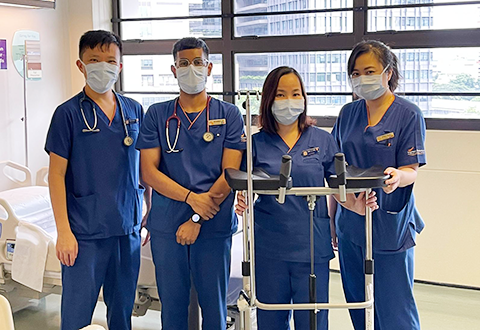
Physiotherapists use a walker (pictured above) to aid patients in ambulating post-surgery.
Armed with a wealth of data, the team rolled out the Enhanced Recovery After Cardiac Surgery (ERACS) pathway. They found that patients on the pathway fared better with the ability to ambulate the same day post-surgery, and showed improved quality of recovery and reduced length of stay. Subsequently, the team implemented Enhanced Recovery After Thoracic Surgery (ERATS) pathway, a similar streamlined approach as ERACS but for thoracic patients. The results were likewise encouraging – about 79% of patients suitable for the pathway, such as those undergoing non-complicated thoracic surgery, ambulated the same day post-surgery and were able to discharge for home at least one day earlier.
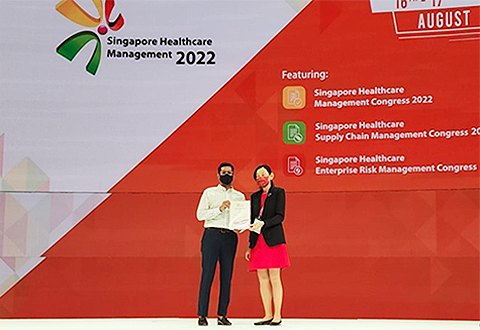
For their excellent work, the team’s initiative clinched Merit (Operations category) at the recent Singapore Healthcare Management 2022.
Since implementing ERACS and ERATS, besides benefitting patients with shorter length of stay, enhanced recovery and lower hospital bill, NHCS has also seen gains in throughput such as improved bed and manpower utilisation – all in all, bringing about better value driven care to patients.
Balancing safety, health and…fun!
The team first included exergaming as part of the interventions at the outpatient service about four years ago. “We recognised that adherence to exercise sessions can be challenging for both patients and therapists. With exergaming, patients play video games that encourage large muscle activity and rigorous exercise, and at the same time, facilitate balance and strength training, all with an enjoyable twist as compared to traditional training methods,” shared Michael Khoo, Physiotherapist.
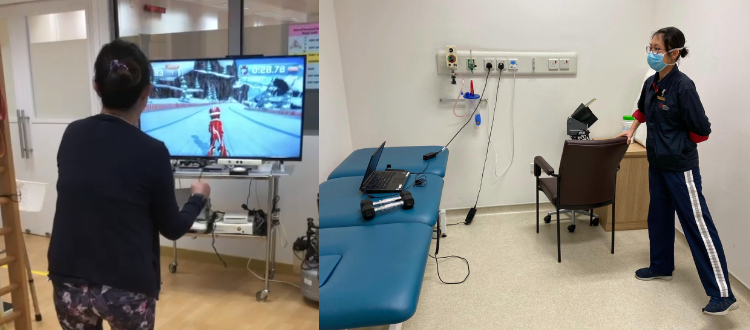 (L-R) Exergaming injects fun into an exercise regime; Demonstrating an exercise during video consult.
(L-R) Exergaming injects fun into an exercise regime; Demonstrating an exercise during video consult.
The team’s Telehealth journey too started at about the same time as exergaming. The onset of the pandemic propelled the use of video consultations for suitable patients, ensuring care continuity in a safe manner. Currently working with Group Allied Health and Temasek Polytechnic to develop a mobile application (app) to track vital signs and physical activity, prescribe exercises and provide patient education for cardiac patients, Haja Mydin S/O Yah Kathier, Senior Principal Physiotherapist shared, “We expect that the app will greatly enhance the connectivity with our patients, allowing us to better care for their recovery needs.”
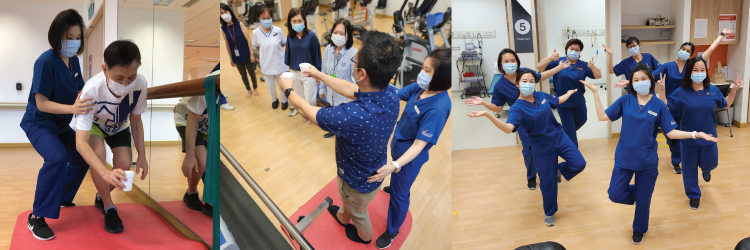 (L-R) In celebration of World Physiotherapy Day, physiotherapists engaged patients and staff through a series of balancing activities.
(L-R) In celebration of World Physiotherapy Day, physiotherapists engaged patients and staff through a series of balancing activities.
“As physiotherapists, we hope to empower patients with the knowledge to take care of their health. With Singapore’s ageing population, the risk of falls can be quite high and that is why for this year’s World Physiotherapy Day, we chose to focus on the theme, Balance – to assess how well patients and staff can balance, and impart exercise techniques which they can do at home to train their balance ability and reduce risk of falls,” said Debbie Wong, Physiotherapist who led the Balance Challenge event.
The magic number
Considering all the Prehab, ERAS and balancing physiotherapists do on a daily basis, it comes as no surprise that they get their regular dose of exercise through work itself. E-lynn jokingly shares, “Each of us cover more than 10,000 steps per day. We don’t just walk the patients, we do more than that for our patients even when they are in intensive care!”
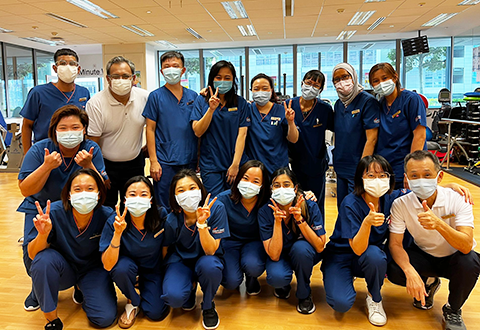
Our team of expert balancers!
And just between you and me, they revealed the magic number of exercise reps to achieve that physio-worthy bod – 10. Sssshhhh…if it doesn’t work, you know who to look for!
